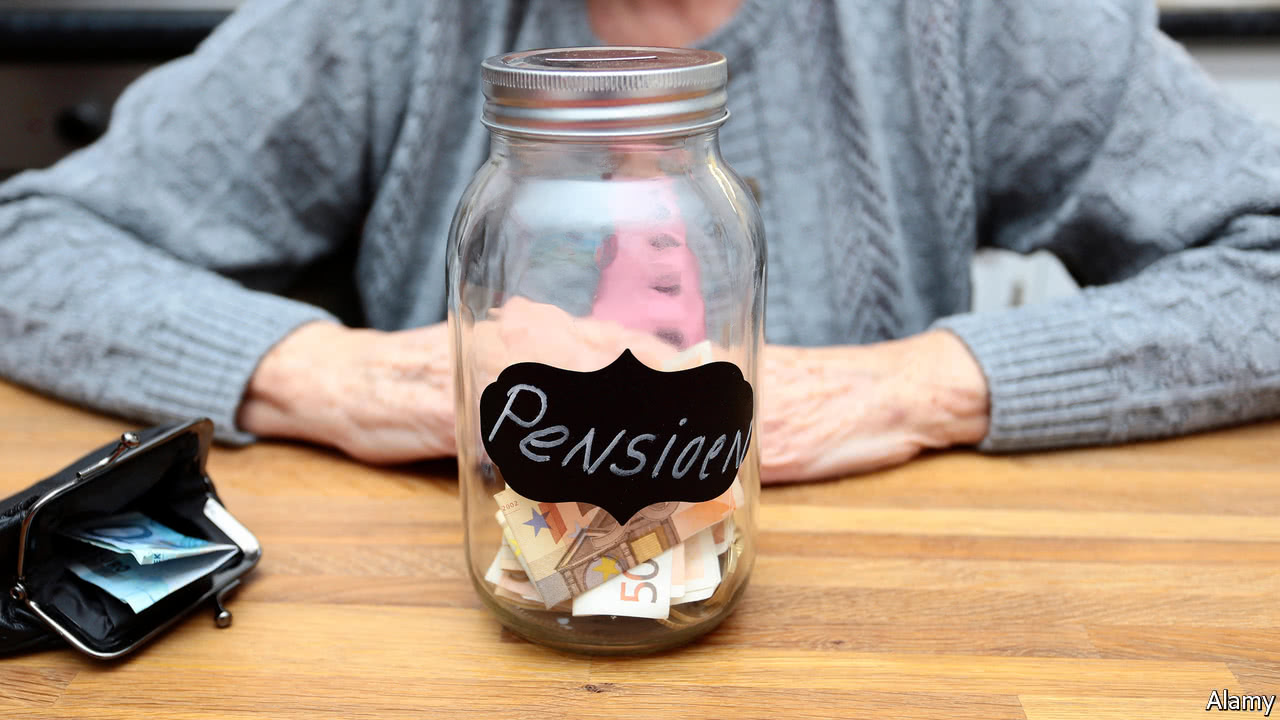
EUROPE’S largest pension fund, a scheme for Dutch public-sector workers called ABP, is much feted abroad for its efforts in “sustainable” investing. At home, however, where it provides pensions to one in six families and manages nearly one-third of pension wealth, it is suffering a crisis of confidence.
By international standards, Dutch pensions are extremely generous overall, offering 96% of career-averagesalaries (adjusted for inflation), compared with an OECD mean of 63%. And they are solid. Thanks to mandatory, tax-deductible saving, the Dutch have stored up a collective pension pot of nearly €1.4trn ($1.6trn), roughly double GDP. Mercer, a consultancy, marks the country as second only to Denmark in a global ranking of schemes.
-
The Trump tax cuts fall far short of Ronald Reagan’s reforms
-
Wine-making existed at least 500 years earlier than previously known
-
Retail sales, producer prices, wages and exchange rates
-
Foreign reserves
-
Why big-wave surfers are heading to Portugal
-
Hybrid models are changing the piano market, too
Yet Dutch people’s faith in their pensions has sunk as low as their trust in banks and insurers. In March a political party for older voters, 50+, won four seats in the Dutch parliament, largely thanks to its promise to “stop the pension raid”. ABP’s own members mark it at just 5.9 out of 10.
The discontent stems from unmet expectations. Marc Heemskerk, from Mercer, says that, in members’ eyes, funds like ABP overpromised and now “face a gigantic trust crisis”. ABP has not raised pensions in line with inflation in any year since 2008, so recipients have lost out by a cumulative 12%; more real-terms declines may be in the offing. It has raised premiums, most recently in January, from 18.8% to 21.1% of pensionable wages. Members find this hard to swallow when ABP’s assets have grown from under €300bn to over €400bn in the past five years.
Blame the “coverage ratios”—the relationship between assets and future liabilities—demanded by the Dutch regulator. By this metric ABP has been naughty for years. Michael Deinema from TPRA, a pensions rating agency, says the fund was slow to respond to changing conditions after the financial crisis of 2008. So its ratio dipped to 83% in 2009. Over the past year it has been 100%—exemplary by international standards, but not by those of the Netherlands, where the average is 105% and the regulator requires 128% to allow pensions to be fully indexed to inflation. ABP points to other factors, notably longer lifespans. Although the retired have lost 12% from inflation-indexing, they are also living far longer, says one manager.
The fund is trying to rebuild trust. Mr Heemskerk thinks offering more choice would help. Denmark has a similar system but members get more say: over how to invest premiums; how much they contribute; and the type of payout they get. ABP is experimenting with a “personal piggy bank” so members can see their savings stack up online—though, since it is a collective scheme, the piggies are not actually personal. In future they may be. The new Dutch government is expected to embark on occupational-pension reform. Saving will remain mandatory, but the system will gradually shift from a “defined-benefit” model to a “defined-contribution” one.
ABP is not the only Dutch pension fund under fire. That it receives the most attention is a drawback of its sheer heft. But size has its benefits. APG, the investment arm, has kept running costs down to just €80 per person, well below the Dutch average. ABP is also big enough to diversify into alternative investments and to get respect from companies as a large shareholder.
Corien Wortmann-Kool, the chairwoman, stresses that the fund is “active rather than activist”. But it has become a critical voice on numerous corporate issues. In 2015 it committed to shift its approach to responsible and sustainable investing, from a nice-to-have option to a core criterion. It is now reassessing every investment and expects that the number of companies in its portfolio will fall by as much as 30% by 2020. By then it has also vowed to cut the carbon footprint of its equity portfolio by 25%; and to invest an extra €4bn in sustainable energy.
If so, ABP’s global fan club will swell—last month an international ranking placed it in the leading 25 “responsible and sustainable” investors. Its members, however, will worry less about the rankings and more about the payouts.
Source: economist
ABP, a Dutch pension giant, is more admired abroad than at home